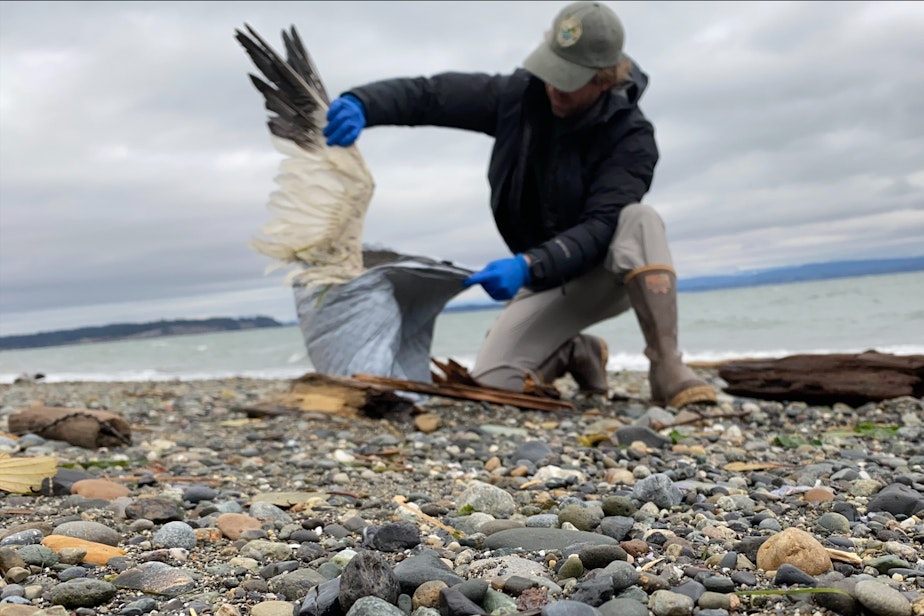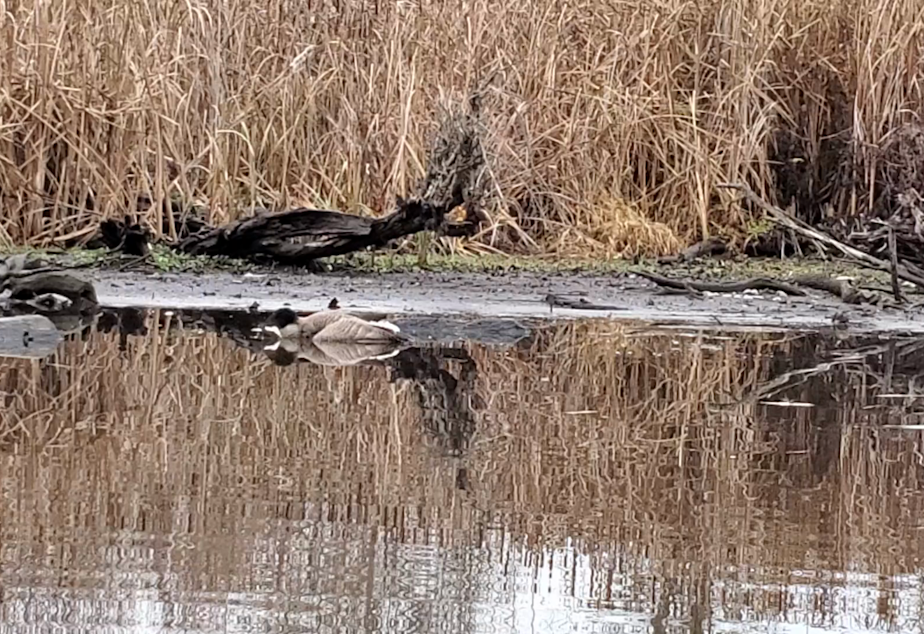Deadly flu hits Washington's birds

Wildlife officials have found hundreds of dead snow geese around Washington’s Skagit Bay, suspected victims of highly pathogenic avian influenza: bird flu.
Officials retrieved and disposed of more than 700 dead birds, mostly young snow geese, in western Skagit County and in neighboring portions of Snohomish and Island counties, the Washington Department of Fish and Wildlife announced Dec. 8.
Bird flu has knocked out feathered friends from factory-farmed chickens to bald eagles around the country in 2022, with cases increasing during wild birds’ spring and fall migrations.
“Late September, October, they started peaking again and then in November, it's just been utter chaos,” said conservation scientist Kersti Muul of Seattle. “I hear things almost daily.”
Muul calls herself a wildlife first responder. When people see a bird in trouble, they give her a call or send her photos and videos of the latest avian flu victims.
“I've been privy to hundreds of cases,” Muul said.
Sponsored
Hundreds of bird deaths, often preceded by hard-to-watch symptoms including birds having seizures or being unable to fly, stand, or even hold their heads up, make a grim spectacle. But they’re not necessarily a threat to those species’ survival.
Snow geese are one of the world's most abundant waterfowl, with a population exceeding 6 million birds. Huge flocks descend upon Western Washington each autumn from the Arctic, with an estimated 55,000 wintering here, according to the Seattle Audubon Society.
“The 400 waterfowl or geese that died up in Whatcom County, it's a huge number, but relative to the overall size of the population, it's kind of a small number,” Muul said. “It's not something that's going to wipe them out.”

 16 secs
A Canada goose displays symptoms of highly pathogenic avian influenza at the Union Bay Natural Area in Seattle on Dec. 13.
16 secs
A Canada goose displays symptoms of highly pathogenic avian influenza at the Union Bay Natural Area in Seattle on Dec. 13.
Domesticated birds have died in much larger numbers. This year is the worst bird-flu outbreak on record, with 13 million chickens killed nationwide since September, according to the U.S. Department of Agriculture.
Sponsored
While those losses are costly to the farms that endure them, to date they are a paltry fraction of the nation’s poultry population.
According to USDA’s National Agricultural Statistics Service, the United States is home to 2.1 billion chickens, outnumbering humans nearly seven to one.
Worldwide, according to the Food and Agriculture Organization of the United Nations and the World Bank, chickens outnumber humans four to one.
Washington state is home to about 11 million chickens, most of them living in just nine industrial-scale facilities with more than 100,000 birds each, according to the National Agricultural Statistics Service.
To date, agriculture officials have reported about 2,500 deaths of backyard chickens in Washington.
Sponsored
On Wednesday, the Washington Department of Agriculture announced the state’s first bird flu outbreak in in a commercial flock, on a large chicken farm in Franklin County, near the Tri-Cities. The agency did not disclose the name of the farm, but Anna King with the Northwest News Network reports it is the Oakdell Farms egg operation north of Pasco, with more than 1 million chickens having to be destroyed to contain the outbreak.
Numbers of wild victims are harder to estimate. Dying birds often go into hiding when ailing, their bodies never found. Still, Muul said the 2022 outbreak among wild birds is the worst that it's ever been.
“I've never seen anything like this,” Muul said.
Muul said 18 bald eagles have been reported dead in Washington, but she guessed the number of eagle flu victims is triple that.
In West Seattle, she’s retrieved and disposed of bald eagles, geese, gulls, and a trumpeter swan.
Sponsored

The male half of a pair of peregrine falcons that have nested beneath the West Seattle Bridge for years was found dead in September.
The highly pathogenic avian influenza kills birds quickly, spreads easily, and there’s no treatment.
“Rapid, humane euthanasia of all birds on the premises is critical to contain the outbreak,” according to a Washington Department of Agriculture press release on the Oakdell Farms outbreak. “Poultry products from the flock will not enter the food supply system.”
Muul said eventually this virus will burn itself out.
Sponsored
She and other scientists urge anyone who sees a dead or dying bird to report it quickly to state wildlife or agriculture agencies so it can be disposed of before any scavengers or pets disturb the contaminated carcass.
Touching or moving a diseased bird could help spread a deadly virus to new victims, wild or domesticated. The current strain of bird flu passes freely between the two types of birds.
This story has been updated with information on a bird flu outbreak at Oakdell Farms.




